Home - Productivity - How To Reduce Meetings in the Workplace
How To Reduce Meetings in the Workplace

Introduction
Every manager has been in a meeting that went on way too long, or spent too much time discussing things that could have been handled more efficiently through email. Meetings are an important part of working life the world over, but they can also take up huge chunks of time.
In this article we’ll look at some ways to ensure your meetings serve their purpose and don’t eat up too much of your day—or leave you frustrated and wishing for more free time!
Table of Contents
Prepare for the meeting
Having a meeting agenda is one of the best ways to reduce meetings in the workplace.
- Prepare a meeting agenda in advance.
- Send it out to everyone in advance, with enough time for them to read it and prepare their thoughts.
- Allocate enough time for each topic so that they can be adequately discussed without having to rush through the meeting.
- Make sure everyone is clear on what they are supposed to do by the end of a meeting, i.e., action items and follow-up tasks.
Decide what’s important
- Make sure you know what you want to achieve. The first step is always the most important one: take a look at your meeting agenda and make sure that it contains a clear, concise list of objectives.
- What are the goals? What are the outcomes? What information do people need in order for them to be able to make decisions? How will these decisions be measured and monitored?
- Ask yourself how much of this information could be gathered via email or phone calls beforehand. Is there anything on this list that doesn’t require face-to-face interaction in order for it to happen successfully? If so, consider substituting some phone calls with an email blast so that those individuals who don’t have time or energy at their disposal can still get involved
Keep the agenda clear and transparent
- Make sure everyone knows the agenda. Post it on the wall, include it in email reminders, and use a digital agenda or shared spreadsheet to keep track of who’s supposed to be there.
- Use an online tool like Meeting For Goals to send out the schedule in advance, allocate action items with deadlines and keeping people accountable.
Meeting Agenda Template Example
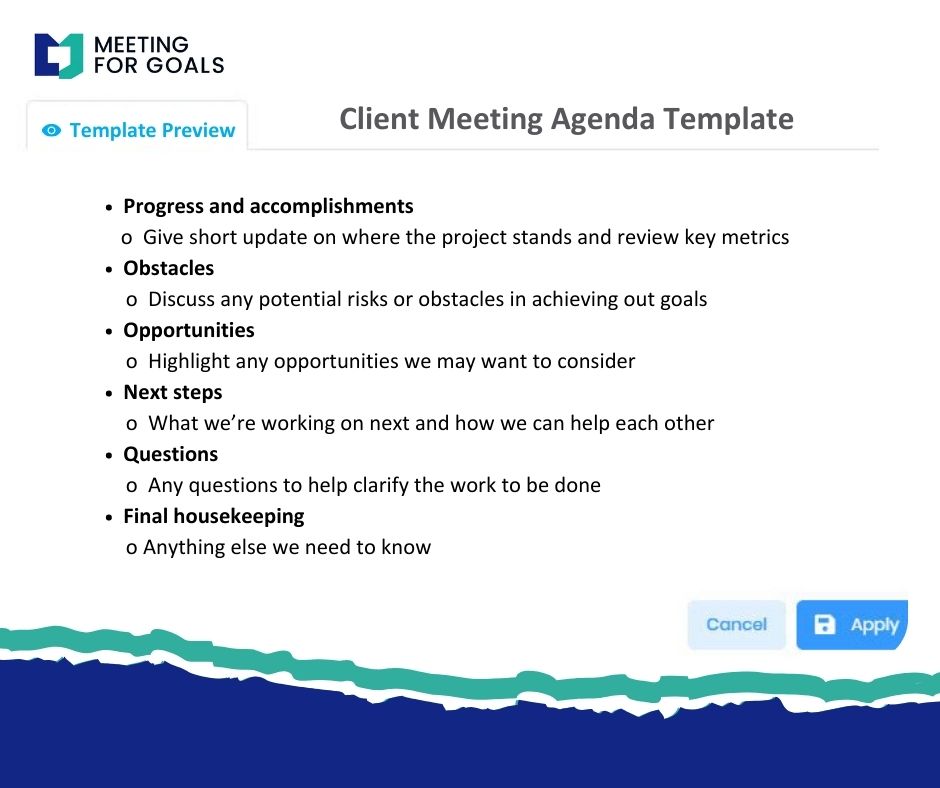
Hold the meeting and keep it short.
- Hold the meeting and stick to the agenda.
- Make sure everyone is aware of what’s going on.
- Ensure that everyone has a chance to speak.
- Make sure everyone understands the outcome of the meeting, including actions required and follow-up steps to be taken.
Short meetings are the best meetings and one of the best ways to Reduce Meetings in the Workplace. If you can’t keep it short, don’t have a meeting. Meetings should be about the topic, not about the people in attendance.

Ask one person to take notes.
- This is like asking for a summary of the meeting; you’ll get it, but it won’t be as detailed or accurate as if you had been there yourself.
- You may want to ask the same person who took notes before the meeting started if they’re willing to take them again at its conclusion—someone who already knows what happened will be able to summarize quickly and accurately.
- Save yourself time by using the many tools out there to write the notes and send it out automatically to everyone. You can use tools like Meeting For Goals or even Google sheets or Microsoft Word.
Assign a facilitator
- A facilitator is a neutral party who runs the meeting. They’re responsible for keeping things on track, making sure everyone gets a chance to speak, and making sure everyone in the room feels comfortable.
- The best facilitators are often people who aren’t involved with your project at all—they can be one of your teammates or an external consultant. Make sure you choose someone who has good listening skills and doesn’t need to be heard themselves during meetings.
Give everyone a voice
- The key to reduce meetings in the workplace is giving everyone a voice. This doesn’t just mean that everyone gets an equal number of turns; it means listening to all points of view, even if they’re different from yours. Always give others the opportunity to speak and don’t interrupt them while they’re talking.
- Don’t dominate the conversation or talk over others—remember that you’re there as part of a team and not as its leader.

Only invite people who need to be there.
Another way to make sure that your meeting is as efficient and effective as possible is by only inviting people who need to be there. This can seem like a no-brainer, but I see this rule broken time and time again.
There are times when you will put together a meeting with lots of attendees because they think it’s the right thing to do—for example, “I have so many people on my team who work with this particular client; we should invite them all.”
But if you don’t actually need everyone at that meeting, then you’ve just wasted everyone’s time.
The solution here is simple: if you’re going to host an event or meeting, make sure that every person invited has something specific and relevant that they can contribute. If they don’t have anything useful to contribute, don’t invite them!
If possible, ask them ahead of time whether they’ll actually be able to attend. People may say yes when they know their boss will sign off on it (because let’s face it: bosses love meetings). But then bail once the day comes around because some other urgent project came up at work instead.
If someone does cancel last minute without offering an alternative resolution (such as volunteering another colleague in their place), it may also be worth asking yourself whether or not that person really needed to come along in the first place.
Don’t default to a meeting.
The first step to reduce Meetings in the workplace is to make sure you have a good reason for having a meeting in the first place. If you’re going to ask people to take time out of their busy schedules, you should be able to explain why it’s necessary.
Think about the alternative solutions available and try your best to find one that doesn’t involve a full-blown gathering.
The second step is being efficient with regard to the actual meeting itself. You can reduce the number of attendees by using video conferencing over in-person meetings whenever possible (or at least as much as possible).
If there are specific people who need not be present—for example, if there are multiple stakeholders on different continents—consider asking them if they would prefer just reading their portions rather than physically attending the conference call or Video call session.
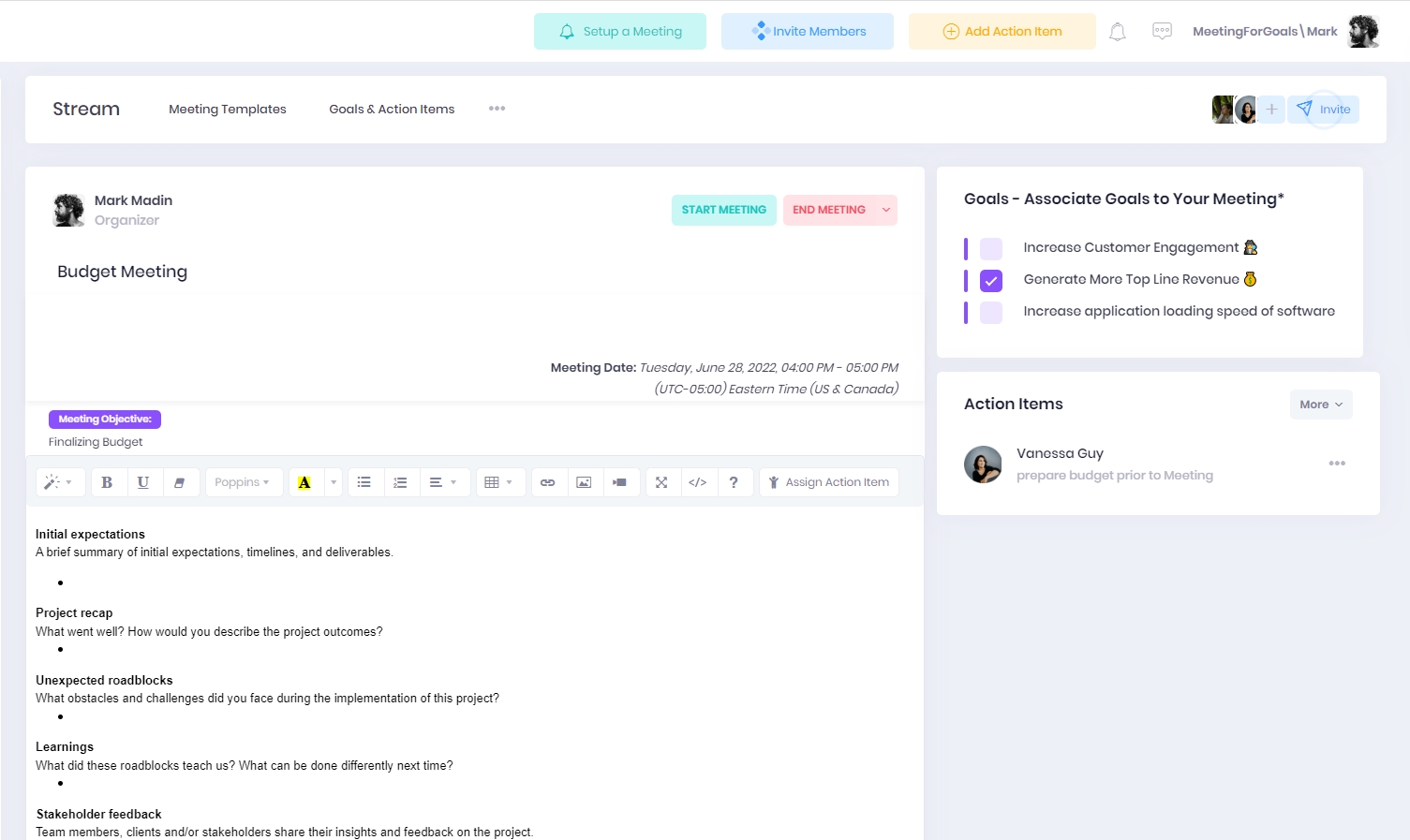
Meetings don’t have to take up so much of your time at work
Meetings are a great way for your team to communicate and work together, but they can also be a waste of time if you do not Reduce Meetings in the Workplace. You need to use meetings sparingly and strategically.
- Meetings should be used to solve problems or make decisions that wouldn’t otherwise be solved or made.
- The best meetings are the ones where you decide how you’re going to solve a problem, not just talk about it.
- If there’s no clear purpose for having a meeting, don’t have one!
Don’t forget to take action and follow up.
While it’s important to identify meetings that can be done away with or minimized, it’s just as important to ensure that your team is following up on the action plans and follow-ups. This ensures that everyone is in sync and working towards the same goals.
- Make sure you have clear action items after each meeting. What do you need to do next? Who needs to know what? How will you track progress toward achieving this goal?
- If you meeting regularly but nothing gets done then you will find yourself meeting again and again over the same issues. That is not a great way to reduce meetings in the workplace
- Ensure your team has a way of measuring outcomes and results so they can see whether their efforts are paying off or not. If something isn’t working well, it may be time for another meeting!
- Finally, make sure there is a clear path for following up on any decisions made during meetings by assigning responsibilities and deadlines accordingly so nothing falls through the cracks when everyone gets busy again.
To ensure your meetings are always effective, remember that less is more!
To ensure your meetings are always effective, remember that less is more!
Meetings are expensive. Let’s say your team meets once a week to discuss project status and strategy for the next quarter (which is totally reasonable).
That means you’re paying for eight hours of people’s time every week. If each employee makes $100 per hour, then your team is costing $800 per session—and since there’s usually no compensation for taking notes or maintaining records, this number can be even higher depending on how many assistants attend each meeting.
But it doesn’t end there: A survey conducted by Capterra found that over 50% of employees said they felt their work performance was negatively affected by frequent interruptions due to meetings—and even if it doesn’t affect their performance directly, those wasted minutes add up quickly when multiplied by everyone in the organization who attends them.
But wait…there’s more! Meetings are dangerous too! The same Capterra study also found that almost two thirds (64%) of employees say they’ve lost valuable work time due to unplanned or unnecessary meetings;
Another report from KPMG found that one person’s ability to focus decreases after just five minutes spent waiting around for others before starting an activity.
Conclusion
Hopefully, these tips will help you Reduce Meetings in the Workplace & cut down on the time you spend in meetings. Let’s be honest: they can get a little tedious.
With the right planning and communication, it’s possible to limit your meetings to only those that are necessary for your job. This way, your coworkers won’t suffer through hours of boring chatter and pointless discussions!
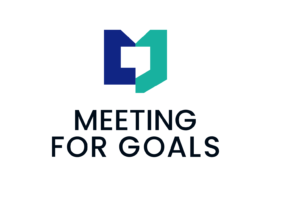
Meeting For Goals Editorial Team
Meeting For Goals is where high performing teams go to have effective meetings, achieve goals & improve morale. All in one painless workflow. Use Meeting For Goals to help guide your meetings and ensure you have the most productive meetings.

Tips to improve your meeting culture & Symptoms of bad meeting culture
Introduction Meetings are an essential part of every company’s life, but they can also be a huge waste of time. The good news: with some

Why are meetings important? Their Advantages & Tools to Have Great Meetings
Introduction Meetings are an essential component of running a successful business. They help you share information, solve problems, and give everyone on your team an
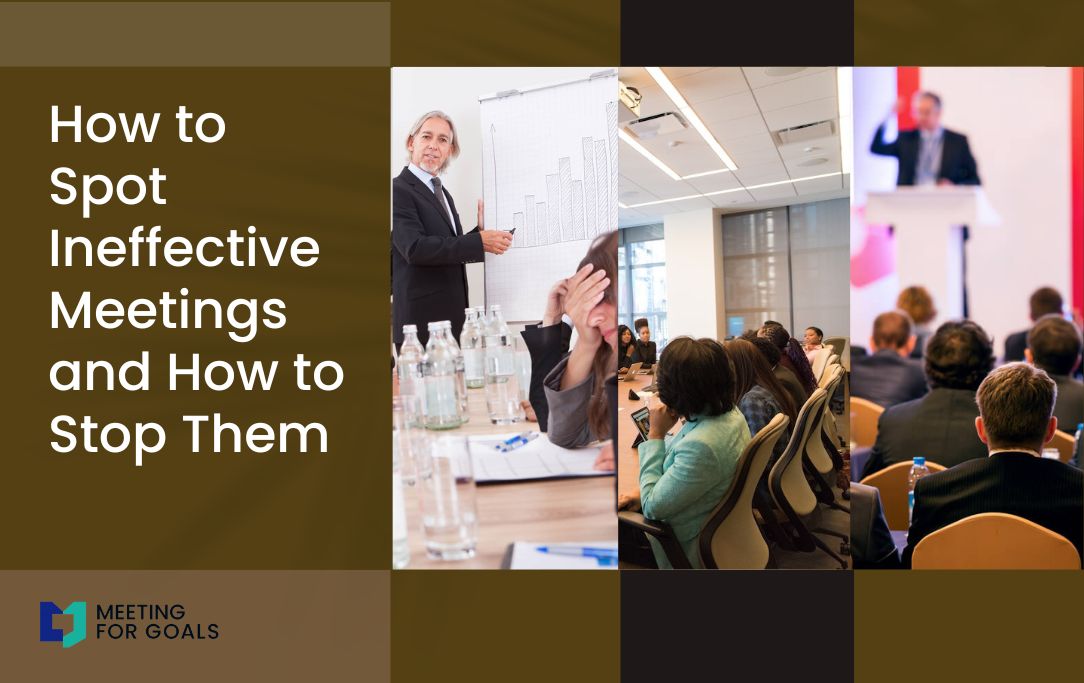
How to Spot Ineffective Meetings and How to Stop Them
Introduction Everyone knows that meetings are a necessary part of business, but few people realize how much time ineffective meetings actually waste. In an effort
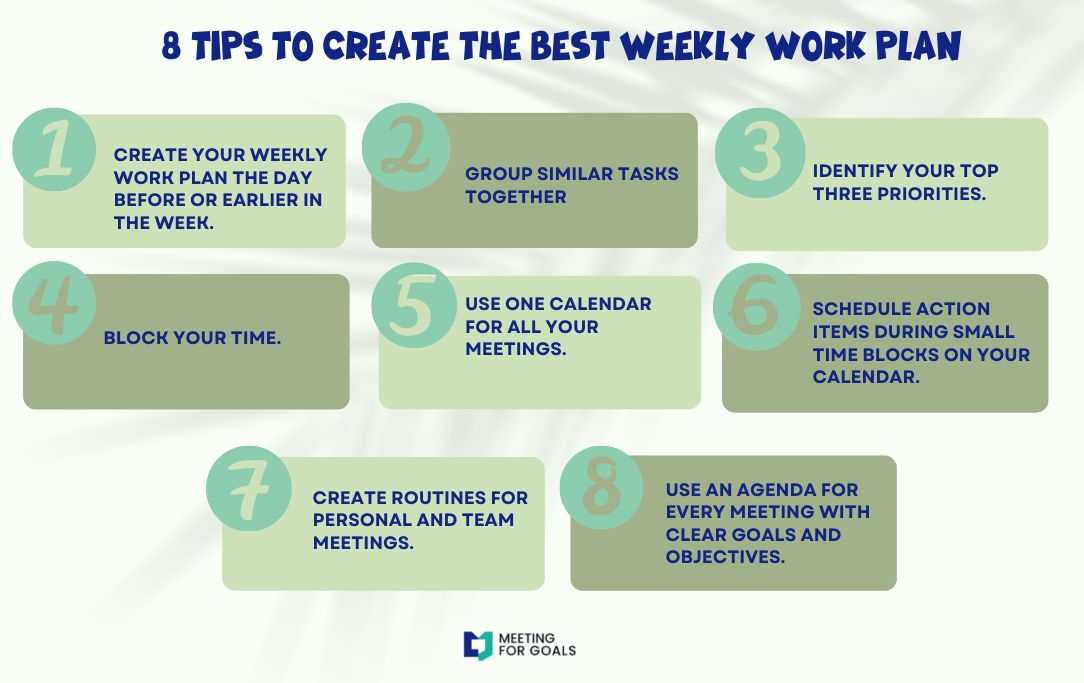
8 Tips to create the best weekly work plan
The key to being successful at work is having a weekly work plan. A weekly work plan is the most effective way to organize and
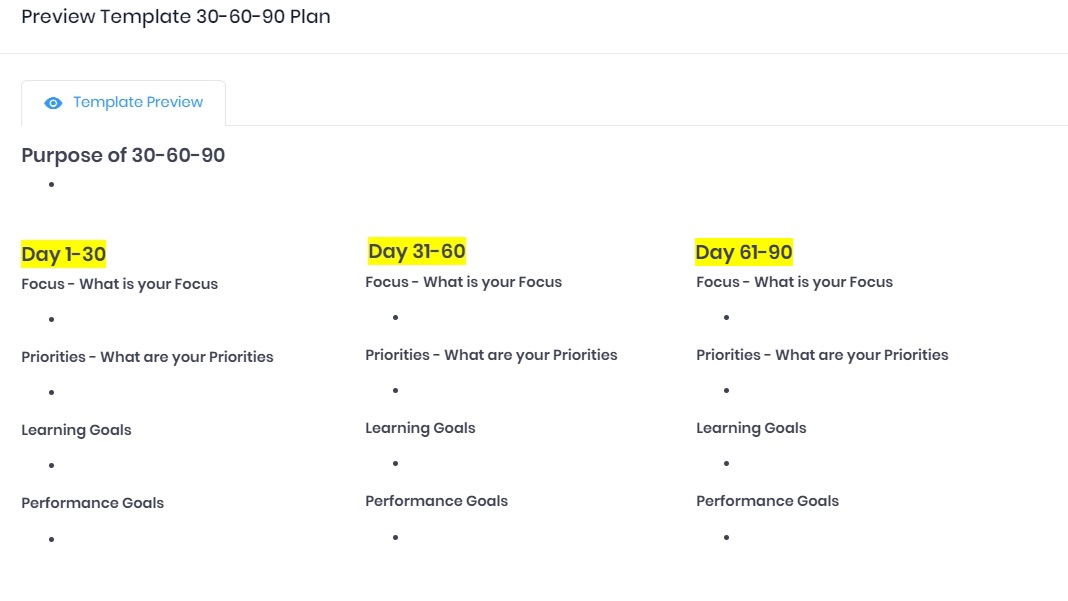
30 60 90 day plan for Managers – Template Included!
Optimize Your Employees First 90 Days: Use the 30-60-90 Day Plan While all job roles can benefit from a plan, managers commonly use a 30-60-90
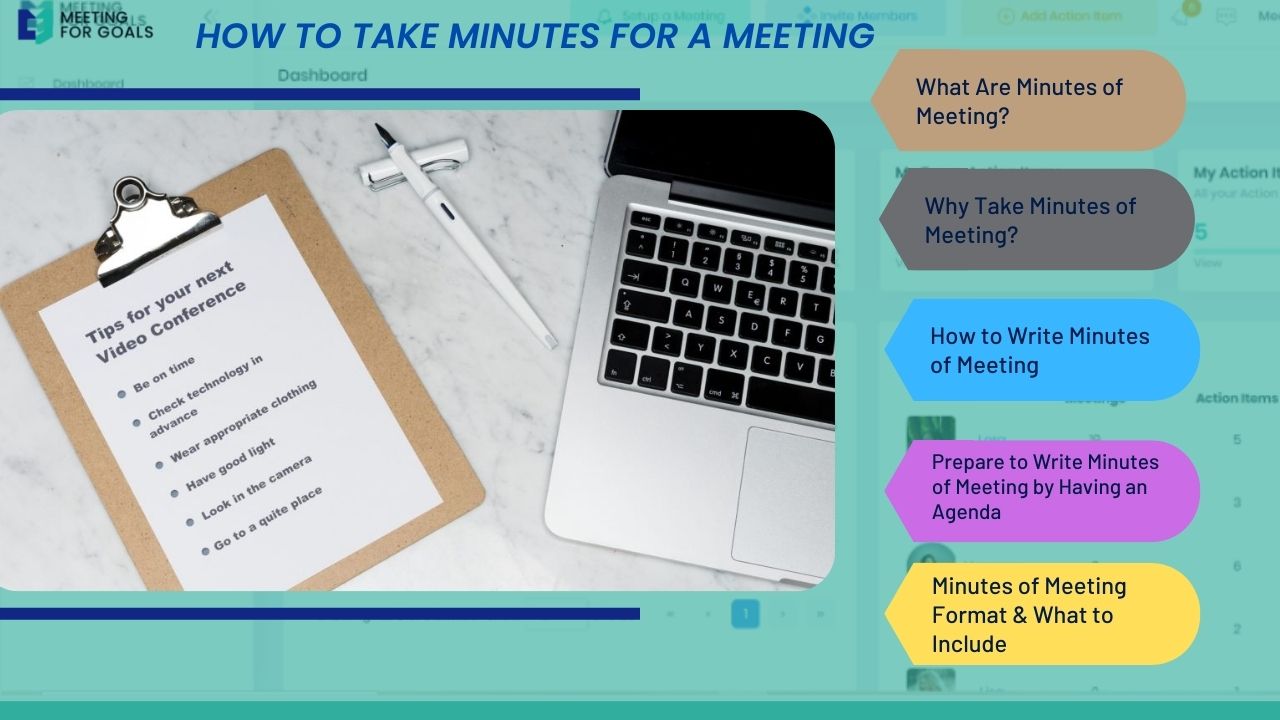
How To Take Minutes For A Meeting
When meeting with a group, it’s important to take minutes as they happen. This ensures that there is no confusion at the end of the
